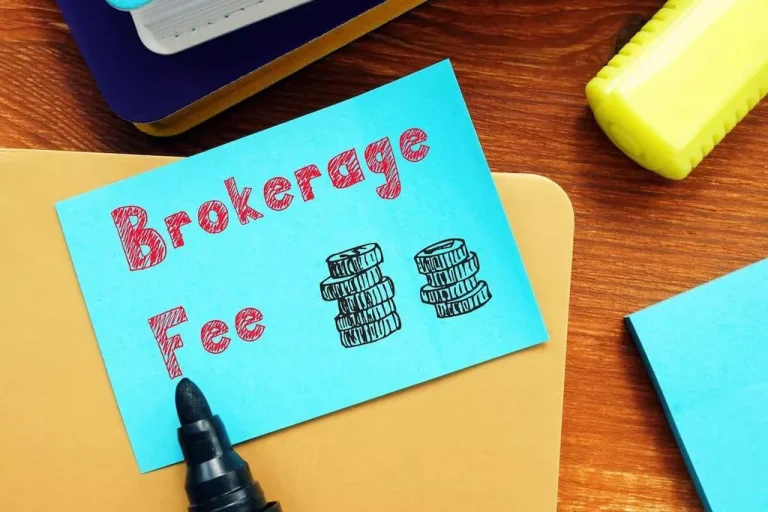Content
They are required to implement KYC, transaction monitoring, and suspicious activity reporting processes to ensure that their platforms are not used for money laundering or terrorist financing. These tools and techniques should be capable of analyzing complex blockchain data to identify suspicious transaction patterns, pinpoint potential illicit activities, and even predict future threats. https://www.xcritical.com/ They should also provide a means of linking blockchain transactions to real-world identities, a process often complicated by the pseudonymous nature of cryptocurrency transactions. Decentralized Finance (DeFi) platforms have emerged as a new frontier in the crypto space, offering a range of innovative financial products and services. However, the lack of regulation and oversight in the DeFi sector has also made it attractive to criminals seeking to launder money.
OORT’s Max Li emphasizes blockchain’s role in AI trust and ethics revolution
- Rarely in American politics has a new industry spent so much money, with such apparent impact, as the cryptocurrency business did in the last election.
- BitConnect, which promised users substantial returns through a Ponzi scheme, collapsed in 2018 due to legal issues with US-based regulators.
- While many businesses and jurisdictions make sure their territories are safe and secure, not all jurisdictions can boast the same.
- If you’ve ever used a cryptocurrency exchange or bought an NFT, it’s likely that you will have had to perform a know-your-customer (KYC) check to verify your identity.
- With its seamless integration, it ensures that businesses stay ahead of ever-evolving compliance requirements.
“People are like, ‘Why did these companies come together and organize and say, “This matters”?'” Garlinghouse said. While both TGR and the Smart Group are separate but linked entities, the tactical lead says there may be times where they work together using “each other’s specific capabilities” for those they work on behalf of. The official says background to compliant aml token sale that social connections likely also help to power what they do and generate business, and that some of the networks, and those linked to them, are likely still operating.
Relevance of KYC/CDD for Compliance and Anti-Financial Crime

While blockchain transactions are often traceable, they do not always reveal the identity of the user. To lower bitcoin cryptocurrency Initial exchange offering money laundering risk, many criminals turn to decentralized peer-to-peer networks which are frequently international. Here, they can often use unsuspecting third parties to send funds on their way to the next destination.

Using bitcoin AML services and tools

Some have proposed a newer, more Web3-friendly version of KYC built around reputation coupled with a limited identity verification process. Know-your-customer policies in the United States became mandatory under the USA Patriot Act of 2001. By October 2002, the Secretary of the Treasury finalized regulations making KYC compulsory for all U.S. banks.
This quick guide to cryptocurrencies and money laundering investigations addresses the use of cryptocurrencies such as Bitcoin or Monero to facilitate serious crimes or to launder stolen money. In rare cases, they might convert cryptocurrency into cash, but this is atypical as fiat markets on unregulated exchanges are uncommon with only a brief tenure. KYC remains a touchy subject, especially in an industry built on the founding principles of privacy and permissionless transactions.
Anti-money laundering (AML) processes are the obvious answer to maintaining a clean cryptocurrency landscape, providing regulated, repeatable ways to prevent financial crime. Criminals employ various methods to launder money through cryptocurrency, such as cryptocurrency tumblers and mixing services, peer-to-peer networks and OTC brokers, and exploiting decentralized finance (DeFi) platforms. Employee training and awareness programs are another essential component of a comprehensive anti-money laundering strategy. By ensuring that their staff members are knowledgeable about money laundering risks and can identify red flags, crypto firms can minimize the likelihood of their services being used for illicit purposes. In addition, VASPs can work with regulatory authorities and share information to aid in investigations and enforcement actions.
For example, in 2021 alone, more than $8.6 billion worth of cryptocurrency was laundered through various cryptocurrency exchanges. Because cryptocurrency transactions can be anonymous, and crypto exchanges vary in the level of regulatory compliance, money laundering in this space is a significant issue. It is difficult for financial institutions and law enforcement agencies to track the flow of these funds once they’ve entered the decentralized system.
If you consider gaming high-risk, you can set your rules accordingly, and our tool will do the work for you. Elliptic AML monitors crypto transactions from addresses labeled as gaming sites, scores, & flags them alerting you with a rank based on your risk rule configuration. This can be accomplished both on regular crypto exchanges or by participating in an Initial Coin Offering (ICO), where using one type of coin to pay for another type, can obfuscate the digital currency’s origin. Money laundering is the process of concealing the origins of money obtained from illegal activities so that the funds can be used without drawing attention to their illicit source. This typically involves making large sums of money generated by criminal activities, such as drug trafficking or terrorist financing, appear legitimate.
This incident sparked suspicions that the founder faked his death to abscond with the funds (LinkedIn). The QuadrigaCX case highlights the risks inherent in centralized exchanges and the need for robust security measures in virtual assets money laundering. This can facilitate illicit activities by obscuring user identities, making it difficult for authorities to trace the origins and destinations of funds. RODRIGUEZ was arrested this morning and is expected to be presented today or tomorrow before a U.S.
This poses a significant challenge for AML professionals who rely on knowing the customer (KYC) information to detect and prevent illegal activities. In this article, we’ll explore how AML regulations apply to crypto, the risks they address, and the key tools businesses can leverage to ensure compliance. This section discusses various investigative tools and techniques at the disposal of law enforcement agencies, such as blockchain analysis, financial investigations, and the significance of industry collaboration in the fight against money laundering. The subsequent sections outline various techniques criminals use, such as cryptocurrency tumblers, mixing services, peer-to-peer networks, OTC brokers, and exploitation of DeFi platforms.
The NCA also says the money laundering has also funded Russian espionage, although it refused to provide any more information. An in-house team can help ensure compliance, but this can be expensive and impractical for smaller MSBs. In-house compliance teams will need the support of highly intelligent tools and platforms to help spot potential money laundering in vast datasets or transaction histories. Most cryptocurrency money laundering schemes end with the clean bitcoin funneled into exchanges in countries with little or no AML regulations. It’s here that they can finally convert it into local fiat and use it to purchase luxury or other high-end items such as sports cars or upscale homes. The crypto travel rule is an AML-focused regulation mandating that VASPs send, receive, and screen personal/business information when they facilitate crypto transactions over a certain monetary threshold.
Financial watchdogs and law enforcement agencies have demonstrated the ability to identify and expose money laundering activities involving Bitcoin by leveraging the information recorded on the blockchain from each Bitcoin transaction (Sanction Scanner). Big data, AI, and machine learning have transformed the approach to fighting financial crime, making it faster, less expensive, and more effective at detecting anomalies. This has shifted financial institutions from rigid rule-based systems to more flexible and comprehensive programs in combating money laundering (Sanction Scanner).
By understanding how these services operate and the role they play in facilitating illicit transactions, law enforcement agencies can develop strategies and tools to detect and disrupt the use of tumblers and mixing services in criminal activities. As law enforcement agencies scramble to catch up with criminals, the latter continue to refine and enhance their money laundering methods. These services break down illicit funds into smaller amounts and distribute them across multiple addresses before recombining them, effectively severing the link between the original source of the funds and their final destination. In essence, understanding the appeal and usage of these key cryptocurrencies in money laundering schemes is crucial for developing effective strategies for combating financial crimes in the digital currency realm. As we progress into an increasingly digital era, it’s vital that anti-money laundering measures evolve in tandem to address the unique challenges posed by virtual assets.
According to the Financial Crime Academy, criminals primarily use Monero, Bitcoin, Ethereum, Ripple, and Litecoin due to their ease of use, availability for sale, and ability to conduct transactions with relative anonymity. The rapidly evolving landscape of stablecoins presents both significant challenges and opportunities for financial institutions. Robust compliance procedures, ongoing monitoring and adaptation, and a deep understanding of the potential risks are key to navigating this new technology. Compliance officers play a crucial role in managing these risks, ensuring compliance with AML regulations and maintaining market integrity. Stablecoins often operate across multiple jurisdictions, each with its own regulatory requirements, leading to compliance challenges and opportunities for regulatory arbitrage. Issuers must assess whether their stablecoin complies with licensing requirements relevant to local and international financial services laws.
From about 2015 through February 2024, RODRIGUEZ and HILL developed, marketed, and operated a cryptocurrency mixing service known as Samourai, an unlicensed money transmitting business from which they earned millions of dollars in fees. Samourai unlawfully combined multiple unique features to execute anonymous financial transactions valued at over $2 billion for its customers. While offering Samourai as a “privacy” service, the defendants knew that it was a haven for criminals to engage in large-scale money laundering and sanctions evasion. Indeed, as the defendants intended and well knew, a substantial portion of the funds that Samourai processed were criminal proceeds passed through Samourai for purposes of concealment.



